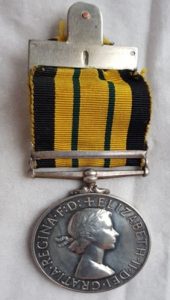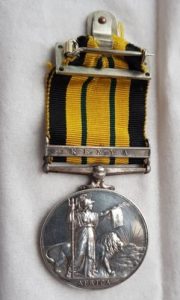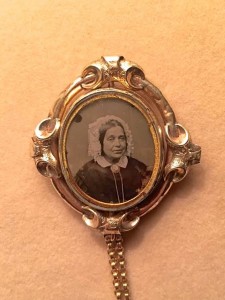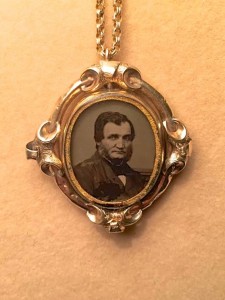William Robertson Photo
Date of Creation: 14 February 1859
Materials: Wooden frame with metallic coating. Photo likely albumin or tin type
Arrival in New Zealand: 1967
Description:
Photo including frame 85 x 73mm (photo 60 x 47mm)
Researcher: Kerrin Robertson-Scanlon
History:
This photo, dated 14 February 1859, shows William Robertson at 20, and appears to have been a gift to his grandfather, Charles. While some of the writing has been damaged, enough remains to determine these details. Along with family papers and newspaper excerpts about family members, this photo came to New Zealand in the late 1960s with William’s grandson when he moved over for work opportunities and to raise his young family.
Significance:
William went on to become a marine engineer, notably serving as chief engineer on the Eira during its Arctic expedition under Benjamin Leigh Smith. His manuscript account of the expedition remains one of the few extant first-hand accounts, which was reproduced in the journal Polar Record in 2000. An obituary indicates that he worked at sea for many years after the voyage, until the health impacts from their hardships in the Arctic became too severe. After 6 years of retirement, he passed away at age 68.
His manuscript having been passed down a different branch of the family, there were limited documents brought to New Zealand. Correspondence to Aberdeen University’s Archivist which was kept with them showed his grandson’s efforts to obtain further information on William’s life. These efforts were unsuccessful, with records focusing on William’s brothers: distinguished librarian Alexander W. Robertson, and philosopher George ‘Croom’ Robertson. While the documents show they were also significant, photos provided a more tangible link to the family history and identity.
Africa General Service Medal
Date of Creation: 1955
Materials: Silver (medal and clasp), Cotton (ribbon)
Arrival in New Zealand: 1958
Description:
Medal (36mm diameter)
- Front: Queen Elizabeth II
- Back: Britannia in front of lion and sunrise, holding a trident, palm branch and a scroll
Ribbon (36mm W, 10mm L): yellow, green and black striped, with a clash which says ‘Kenya’
Researcher: Sam Moncur
History:
Lance-Corporal David Hutcheon received this medal to acknowledge his service in the Black Watch regiment of the British Army in Kenya in 1955 and 1956. Hutcheon’s service in Kenya was part of Britain’s ongoing effort to suppress the Mau Mau Uprising of 1952-1960. While the Africa General Service Medal had been given out since 1902, this particular medal is distinguishable by the clasp which says ‘Kenya’. It was also the only one to be given out during the reign of Queen Elizabeth II.
Significance:
As he was working on his family’s farm just out of Dundee, Scotland, Hutcheon repeatedly deferred his two years of national service. An increase in national service wages eventually persuaded him to enlist. Hutcheon was sent home from the army after two years when a change in family circumstances meant he had to return to his family farm. A year later, however, he saw an advertisement for free passage to New Zealand for ex-servicemen, which he took, arriving in Oamaru in 1958. Hutcheon’s medal is significant because it was his time in the army which helped him migrate from Scotland to New Zealand.
Knox Family Locket
Date of Creation: c.1850-1862
Materials: Gold, photographic paper
Arrival in Dunedin: November 1862
Description: 45mm by 50mm gold locket, gilded frame, etched detail, rotating interior.
Researcher: Violeta Gilabert
History:
This locket belonged to Marion and Jeremiah Borrows of Glasgow. They accompanied their newlywed daughter Mary and son-in-law James Ferguson to New Zealand, arriving in Port Chalmers on the Aboukir in November 1862. The story of the Borrow-Ferguson family was a common one: urban lowlanders, respectable and of modest means, dominated Scottish migration to New Zealand.
A married Presbyterian woman, Marion wears a white bonnet – a sign of modesty and piety. As a baker, Jeremiah and other small artisans like him were losing ground to Glasgow’s large industries. Towards the mid-nineteenth century, overpopulation and pollution cut lives short and sent many into desperate poverty. Working families like the Borrows-Fergusons found themselves looking to New Zealand for a fresh start.
Significance:
This locket is a treasure for two, with a rotating centre so husband or wife could wear an image of their spouse. Where there is a chain now, there was a pin – as a brooch this would have been more of a unisex piece, worn on the lapel.
Treasured objects such as this, recalling love, faith and family, sustained many Scots migrants throughout their voyage and settlement in the antipodes. Over 150 years later, it still remains in the hands of the Borrows-Ferguson’s descendants, the Knox family. Images of Mary and James Ferguson hang in the Portrait Gallery of Toitū Otago Settlers Museum.







